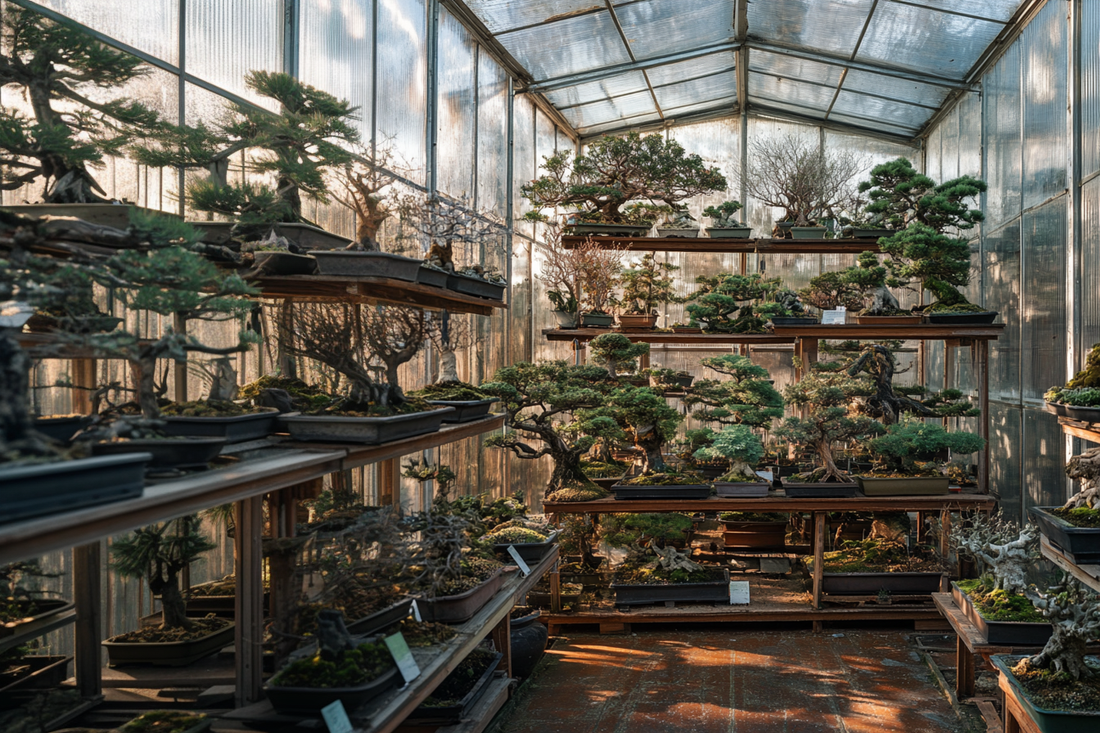
7 Essential Mid-Winter Bonsai Tasks to Keep Your Overwintered Trees Thriving
Share
7 Essential Mid-Winter Bonsai Tasks to Keep Your Overwintered Trees Thriving
If you’re a bonsai enthusiast looking to maintain healthy, vibrant trees all year round, mid-winter is a critical checkpoint. While your bonsai might appear dormant, this period sets the stage for spring growth. Below are seven must-do tasks to ensure your miniature trees stay in prime condition through the cold months.

1. Inspect Root Health
- Why it Matters: Roots are the lifeline of your bonsai. Any sign of rot or decay can quickly become a bigger problem.
- Quick Tip: If you notice poor drainage or sour-smelling soil, repot with fresh, high-quality mix to prevent further damage.
2. Examine Leaf Condition
- Dormancy Doesn’t Mean Ignoring Leaves: Even in winter, leaves (or needles) can show discoloration or wilting.
- What to Do: Adjust watering and light exposure if you spot any browning or dullness. Sometimes, a slight tweak in care can make a huge difference.
3. Monitor for Pests
- The Silent Threat: Pests can thrive in warmer indoor climates, even when bonsai are “resting.”
- Action Step: Check leaves, stems, and the soil surface for unwanted critters. Catching infestations early makes treatment far more effective.
4. Maintain Optimal Temperature & Light
- Finding the Right Balance: Indoor bonsai need a cool, frost-free spot, while outdoor bonsai benefit from shelter from severe weather.
- Pro Tip: Use a grow light or natural sunlight to ensure they receive enough light, and avoid placing them directly near heating vents or drafty windows.
5. Fine-Tune Watering Practices
- Common Misstep: Overwatering is easier when your bonsai’s growth slows.
- How to Adjust: Check soil moisture regularly. Water only when the topsoil starts to feel slightly dry to the touch, ensuring roots don’t sit in soggy soil.
6. Stay Informed & Engage with the Community
- Why it Helps: Bonsai care is a lifelong learning process, and exchanging knowledge is a great way to refine your approach.
- Next Steps: Join bonsai forums, follow reputable blogs, and connect with local clubs. Sharing experiences often reveals tips you might never have considered.
7. Practice Patience & Observation
- Key to Long-Term Success: Every bonsai is unique, and small changes can mean big improvements—or setbacks.
- What to Remember: Observe your tree’s response to care adjustments, and give it time. Consistent, attentive care beats constant tinkering every time.